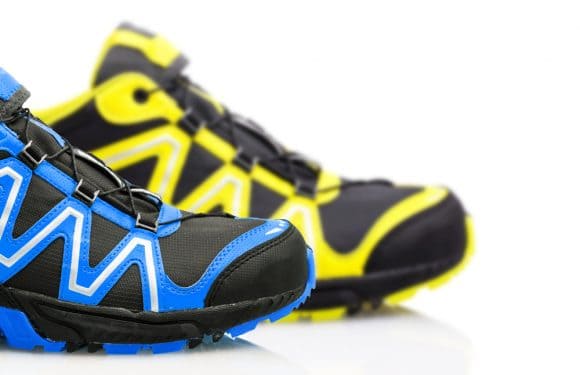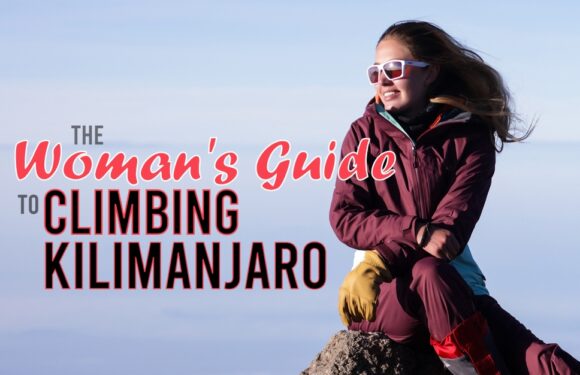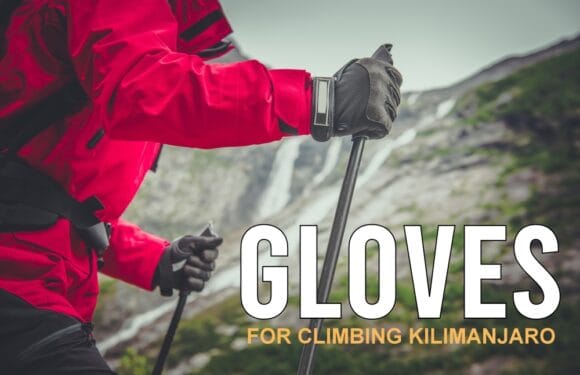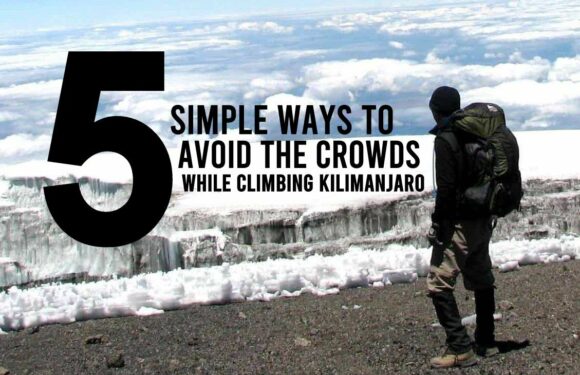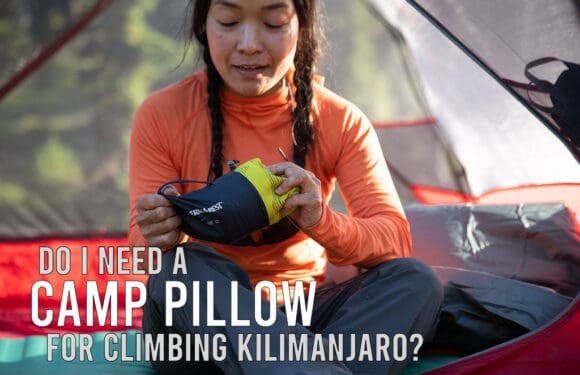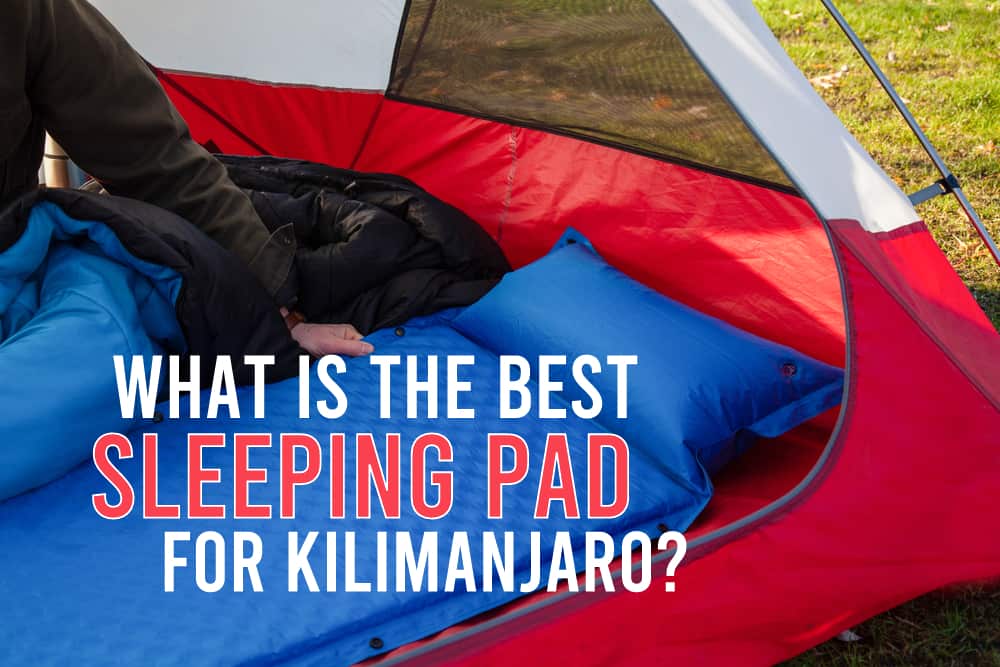
A sleeping pad or sleeping mat is a portable mattress that is used in outdoor environments.
They are two main types of sleeping pads – inflatable pads and foam pads.
Inflatable pads use air as a cushion. Some pads require the user to manually blow into the mattress using a valve. There are also self-inflating pads that mostly inflate and deflate on their own, but still require the user to top it off with breath to achieve the right firmness.
Foam pads are constructed with closed-cell foam. Closed cell means that air and moisture are unable to get inside the foam. Though foam pads are cheaper and more durable than inflatable pads, we do not recommend them on Kilimanjaro because they are bulky.

What Does a Sleeping Pad Do?
A sleeping pad or mat serves two important purposes:
- Comfort – Laying on a hard surface isn’t fun. A sleeping pad provides a nice cushion for your body to rest upon.
- Insulation – By creating a layer between your body and the ground, the pad helps hold your body heat and insulates you.
Foam Sleeping Pads are Provided on Our Climbs
On our Kilimanjaro expeditions, we provide 1.5″ thick, foam sleeping pads for our clients.
You do not need to bring a separate sleeping pad for your climb.
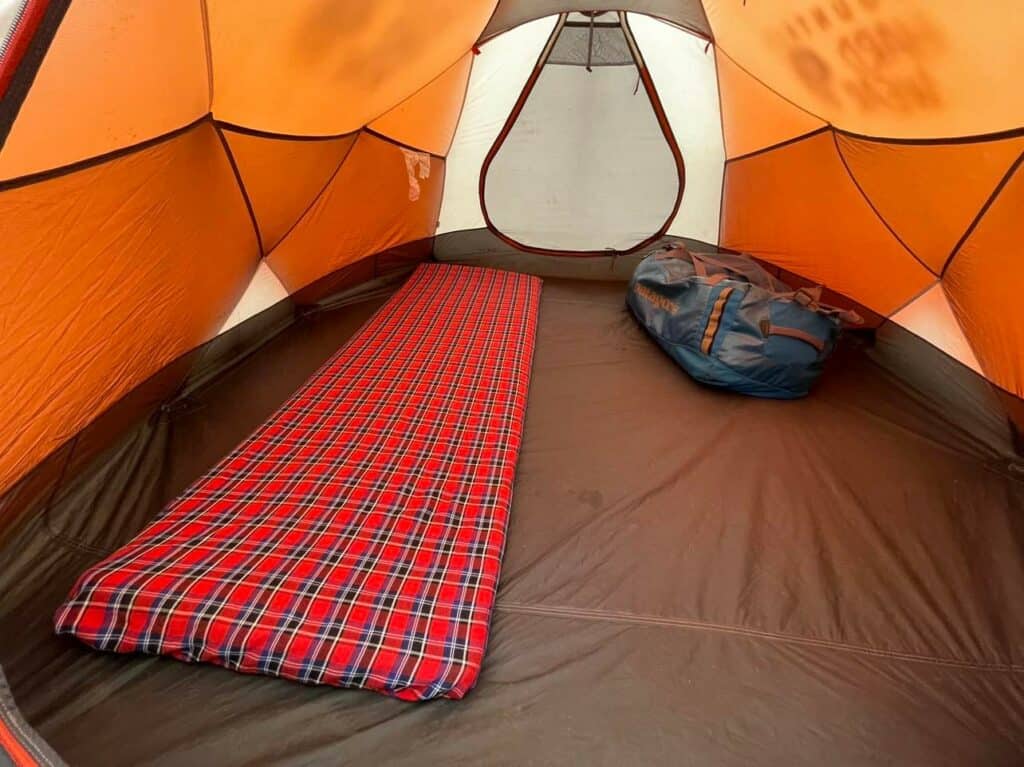
For most people, our foam pads, shown above, are wholly sufficient. The pad is placed inside a removable, washable, acrylic cover.
We have had thousands of people sleep very well on Mount Kilimanjaro using our sleep system – our rental Mountain Hardwear sleeping bag, locally sourced foam sleeping pad, and Mountain Hardwear four season tent.
Who Might Want to Bring an Additional Sleeping Pad?
Some clients should consider bringing another sleeping pad to double up on the padding (placing their inflatable pad on top of our foam mat).
- Cold sleepers who require additional insulation from the ground
- Light or difficult sleepers who need more comfort to fall or stay asleep
- Side sleepers who need more space between their bodies and the ground
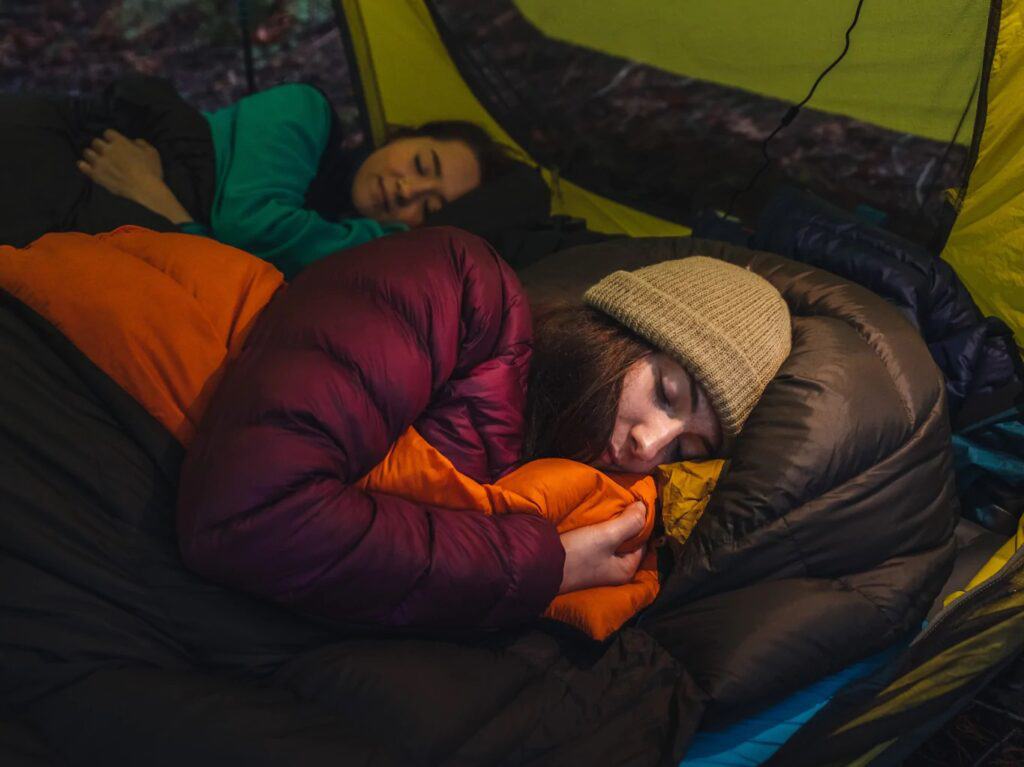
What is R-Value?
R-Value is a sleeping pad’s ability to insulate you from the ground. Technically speaking, an R-value measures how well an object resists heat. The higher the R-value of a sleeping pad, the greater it will resist heat transfer and the warmer it will be.

This insulation is measured on a scale from 0 to 6. However, note that since you will have a foam sleeping pad AND an inflatable pad, you will not need a particularly high R-value sleeping pad should you choose to bring one.
Here are our recommended sleeping pads.
Sea to Summit Ultralight Insulated Sleeping Pad

The Sea to Summit Ultralight Insulated Sleeping Pad is made of ripstop nylon to balance low weight and durability. This pad has an R-value of 3.1 for moderate insulation.
Therm-a-Rest NeoAir XLite Sleeping Pad

The Therm-a-Rest NeoAir XLite Sleeping Pad is a lightweight sleeping pad weighing in at only 340 grams. This also has a thermal value of R4.2, offering comfort and warmth in a lightweight and compact package.
NEMO Tensor Ultralight Insulated Sleeping Pad

The NEMO Tensor Ultralight Insulated Sleeping Pad offers quiet, supportive comfort in an ultralight package. This pad has an R-value of 4.2, which makes it superb in cold weather, providing considerable insulation from ground temperature.
__________



















































